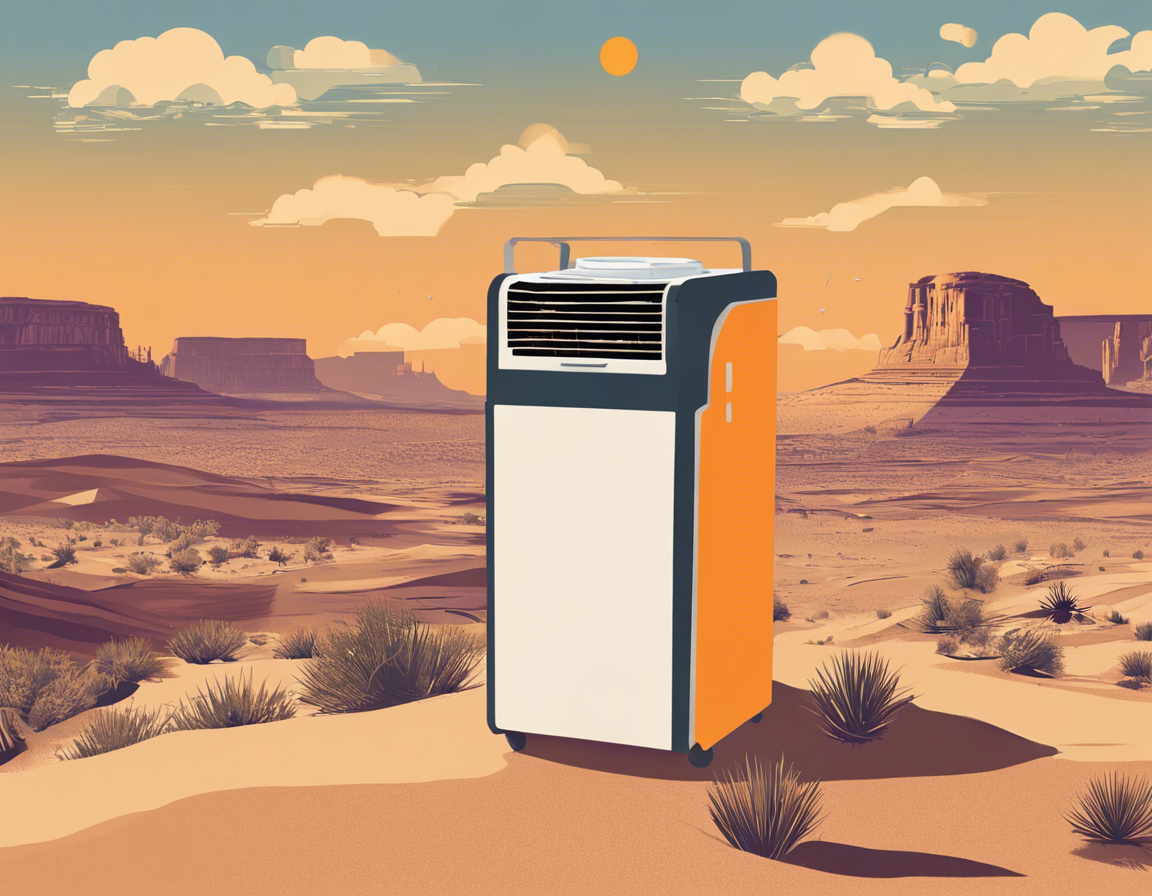The scorching heat of summer can be relentless, especially in regions where the temperature soars to extreme levels. While air conditioning units are a common solution to combat the heat, desert coolers provide a more cost-effective and energy-efficient alternative that is better suited for hot, dry climates. In this article, we will explore the various reasons why a desert cooler is a better choice on hot days.
Understanding Desert Coolers
Desert coolers, also known as evaporative coolers or swamp coolers, work on a simple principle of evaporation to cool the air. These units draw in hot, dry air from the environment and pass it through moisture-soaked pads. As the air passes through these pads, the water evaporates, extracting heat from the air and lowering its temperature. The cooler, now cooled air is then circulated back into the room, providing a refreshing breeze.
Advantages of Desert Coolers on Hot Days
1. Energy Efficiency
One of the primary advantages of using a desert cooler on hot days is its energy efficiency. Unlike traditional air conditioners that rely on refrigerants and compressors to cool the air, desert coolers consume significantly less electricity. The only major electrical component in a desert cooler is the fan that circulates the air, making it a more sustainable and eco-friendly cooling option.
2. Cost-Effective
In addition to being energy-efficient, desert coolers are also more cost-effective in terms of initial investment and operational costs. These units are generally more affordable to purchase compared to air conditioners, and they also have lower maintenance costs. Furthermore, since they consume less electricity, using a desert cooler can lead to substantial savings on energy bills in the long run.
3. Adds Moisture to the Air
Unlike air conditioners that tend to dry out the air, desert coolers add moisture to the environment. This can be especially beneficial in arid regions where the air is extremely dry. The increased humidity provided by the cooler can help alleviate symptoms such as dry skin, irritated eyes, and respiratory issues.
4. Easy Installation and Portability
Desert coolers are relatively easy to install and portable, making them a convenient cooling solution for different areas within a home or office. Unlike air conditioning units that require complex installation procedures and permanent fixtures, desert coolers can be moved from one room to another with ease.
5. Environmentally Friendly
Another significant advantage of desert coolers is that they are environmentally friendly. Since they do not use harmful refrigerants that contribute to ozone depletion, desert coolers have a lower carbon footprint compared to traditional air conditioners. By opting for a desert cooler, you are not only cooling your space but also reducing your environmental impact.
6. Effective in Dry Climates
Desert coolers are specifically designed for use in dry climates where humidity levels are low. In regions where traditional air conditioners may struggle to operate efficiently due to the lack of moisture in the air, desert coolers excel in providing effective and natural cooling through the process of evaporation.
FAQs on Desert Coolers
1. Can I use a desert cooler in a humid environment?
No, desert coolers are most effective in dry climates with low humidity levels. In humid environments, the evaporation process may not work efficiently, leading to increased moisture in the air without a significant drop in temperature.
2. Do desert coolers require a lot of water to operate?
While desert coolers do require water for the evaporation process, they are generally water-efficient compared to other cooling methods. The water consumption of a desert cooler is minimal, especially when considering the overall energy savings it provides.
3. Are desert coolers suitable for large spaces?
Desert coolers are more effective in smaller to medium-sized spaces. For larger areas, it is recommended to use multiple desert coolers or opt for a larger unit with higher cooling capacity to ensure even distribution of cooled air.
4. How often do I need to clean and maintain a desert cooler?
Regular cleaning and maintenance are essential to ensure the optimal performance of a desert cooler. It is recommended to clean the pads, water tank, and exterior of the cooler every few weeks to prevent the build-up of dirt, mold, or bacteria.
5. Can a desert cooler be used with air conditioning?
While it is possible to use a desert cooler and air conditioning unit together, it is not always necessary. In most cases, the cooling capacity of a desert cooler may suffice to maintain a comfortable temperature, eliminating the need for additional air conditioning.
6. How does a desert cooler compare to a traditional air conditioner in terms of cooling efficiency?
Desert coolers are generally less effective than traditional air conditioners in terms of cooling efficiency, especially in extremely hot and humid conditions. However, they are a more sustainable and economical cooling option, particularly in dry climates.
7. Are there any health benefits to using a desert cooler?
The increase in humidity provided by a desert cooler can have beneficial effects on respiratory health, skin hydration, and overall comfort. The cooler air produced by these units can help alleviate symptoms of dryness and irritation often associated with dry climates.
8. Can a desert cooler be used outdoors?
While desert coolers are primarily designed for indoor use, there are outdoor-compatible models available that are specifically built to withstand outdoor conditions. These outdoor coolers can be used on patios, decks, or in open-air spaces to provide cooling relief during hot days.
9. How do I know what size desert cooler is suitable for my space?
The size of the desert cooler you need depends on the area you want to cool. Measure the dimensions of the space where you intend to place the cooler and choose a unit with the appropriate cooling capacity to ensure effective and efficient cooling.
10. Can a desert cooler help reduce allergens in the air?
While desert coolers do add moisture to the air, which can help reduce the concentration of allergens, they are not as effective as air purifiers in removing airborne particles such as dust, pollen, or pet dander. For individuals with allergies, it is recommended to use a combination of a desert cooler and an air purifier for improved air quality.
In conclusion, desert coolers offer a range of benefits that make them a superior choice for cooling on hot days, especially in dry climates. From their energy efficiency and cost-effectiveness to their ability to add moisture to the air and eco-friendliness, desert coolers provide a sustainable and comfortable cooling solution for homes and offices alike. By understanding the advantages of desert coolers and addressing common questions about their usage, you can make an informed decision on whether a desert cooler is the right choice for your cooling needs.



